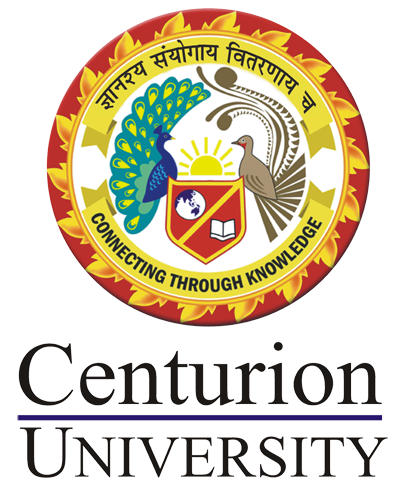per person /
Free
Statistical Methods
Course Attendees
Still no participant
Course Reviews
Still no reviews
Course Name : Statistical Methods
Code(Credit) : FSEE 1101(2-1-0)
Course Objectives
- To develop the students ability to deal with numerical and quantitative issues in statistics
- To enable the use of statistical, graphical and algebraic techniques.
- To have a proper understanding of Statistical applications in Fisheries.
Learning Outcomes
- Describe and discuss the key terminology, concepts tools and techniques used in statistical analysis.
- Critically evaluate the underlying assumptions of analysis tools
- Understand and critically discuss the issues surrounding sampling and significance
- Discuss critically the uses and limitations of statistical analysis
- Solve a range of problems using the techniques covered
- Conduct basic statistical analysis of data.
Course Syllabus
- Theory
- Definition of statistics, Concepts of population, sample, Census and sample surveys,Classification of data, frequency and cumulative frequency table.Diagrammatic and graphicalrepresentation of data - bar diagrams, pie-diagram, histogram, frequency polygon, frequencycurve and Ogives. Important measures of central tendency - arithmetic mean median and mode.Relative merits and demerits of these measures. Important measures of dispersion, Range, MeanDeviation, Variance and Standard Deviation. Relative merits and demerits of these measures.Coefficient of variation; Normal Curve, Concepts of Skewness and kurtosis. Definitions of probability, mutually exclusive and independent events, conditional probability,addition and multiplication theorems.Random variable, concepts of theoretical distribution;Binomial, Poisson and Normal distributions and their use in fisheries. Basic concept of samplingdistribution; standard error and central limit theorem. Introduction to statistical inference, generalprinciples of testing of hypothesis, types of errors. Tests of significance based on Normal, t, andChi-square distributions. Bivariate data, scatter diagram, simple linear correlation, measure andproperties, linear regression, equation and fitting; relation between correlation and regression,Length weight relationship in fishes; applications of linear regression in fisheries. Methodologyfor estimation of marine fish landings in India, Estimation of inland fish production in India andproblems encountered.
- Practical
- Construction of questionnaires and schedules.Diagrams and frequency graphs.Calculationof arithmetic mean, median, mode, range, mean deviation, variance, standard deviation. Exerciseson probability, Binomial and Poisson distributions, Area of normal curve ,confidence interval forpopulation mean, Test of hypothesis based on normal, t, and chi-square. Computation of Simplecorrelation and regression.Fitting of length - weight relationship in fishes.
- Reference Book
- Sampling theory of surveys with applications –P.V. Sukhatme and V.Sukhatme
- Statistics , a introducing –D.A.S. Fraser
- Statistics for biologists --- R.C. Compbell
- A first coerces in statistics with application ---A.K.P.C. Swain
- Economics of bio statistics --- S.Prassad
- Fundamental of mathematics statistics ---S.C.Gupta / V.K.Kapoor
- Fisheries statstics ----R.C.Biradar
Session Plan
Session 1
Definition and scope of statistics
Definition of statistics and fisheries statistics
Importance and scope of fisheries statistics
Limitations of statistics
Concept of sample and population
Session 2
Basic concepts and collection of data
Definition of Sample Survey and Complete census,
Advantages of survey over complete census,
Classification of data,
Frequency distribution and cumulative frequency distribution
Session 3
Diagrammatic and graphical representation of data
Merits and demerits of graphical representation
Representation of data through Bar-diagram, Pie diagram, histogram frequency polygon, frequency curve and ogives.
Session 4
Practical- Guidelines for constructing questionnaire and schedule
Construction of questionnaire and schedule
Diagrams and frequency graphs (bar diagram, Pie-diagram and histogram
Session 5
Measures of central tendency
Concept of measures of central tendency
Merits and demerits
https://www.youtube.com/watch?v=EG_LUhmsVFY&list=PLLgJVrtHe9RppCDT5Nf0Pdz95i1N81zyG
Session 6
Definition of mean, median and mode
Merits and demerits of mean, median and mode
Calculation of mean, median and mode
https://www.youtube.com/watch?v=EG_LUhmsVFY&list=PLLgJVrtHe9RppCDT5Nf0Pdz95i1N81zyG
Session 7
Measures of dispersion:
Concept and definition of measures of dispersion
Definition of range, mean deviation, standard deviation and variance
Merits and demerits,
Calculation of range, mean deviation and standard deviation
https://www.youtube.com/watch?v=EG_LUhmsVFY&list=PLLgJVrtHe9RppCDT5Nf0Pdz95i1N81zyG
Session 8
Practical- Calculation of mean, median and mode
Calculation of range, mean deviation and standard deviation
Session 9
Definition of co-efficient of variation,
Application of co-efficient of variation,
Measurement of co-efficient of variation
Session 10
Definition of skewness and kurtosis
Measurement of skewness and kurtosis
Definition of Probability
Terms used in definition of probability ( random experiment, event and trials,
exhaustive cases and favourable cases, mutually exclusive event).
https://www.youtube.com/watch?v=nqPS29IvnHk
Session 11
Definition of skewness and kurtosis
Measurement of skewness and kurtosis
Definition of Probability
Terms used in definition of probability ( random experiment, event and trials,
exhaustive cases and favourable cases, mutually exclusive event).
https://www.youtube.com/watch?v=nqPS29IvnHk
Session 12
Practical- Exercise on probability
Fitting of binomial distribution in fisheries
Session 13
- Definition of theoretical distribution
- Definition of binomial distribution
- Fitting of binomial distribution in fisheries,
- Definition of poison distribution,
- Probability mass function of poison distribution and properties of poison distribution
Session 14
Application of poison distribution in fisheries and fitting of poison distribution
Definition normal distribution and properties of normal distribution
Normal probability curve and concept of standard normal variate
Application of normal distribution in fisheries
https://www.youtube.com/watch?v=nqPS29IvnHk
Session 15
Concept of sampling distribution and standard error
Important uses of standard error,
Central limit theorem
Concept of Statistical inference
Definition of simple and composite hypothesis
Definition of point and interval estimation
Session 16
- Practical- Testing of hypothesis based on normal distribution
- Testing of hypothesis based on chi-square distribution
- Testing of hypothesis based on t-distribution
Session 17
General principles of testing of hypothesis,
Definition of statistical hypothesis, null hypothesis, alternative hypothesis, type-I and type-II error
Session 18
Level of significance, degrees of freedom
Definition of critical region, one tailed and two tailed test Concept of chi-square distribution
Definition of chi-square distribution
Session 19
- Practical- Testing of hypothesis based on normal distribution
- Testing of hypothesis based on chi-square distribution
- Testing of hypothesis based on t-distribution
Session 20
Concept of t- distribution
Definition t- distribution,
Applications of t- distribution
Test of significance based on t-distribution
Assumptions of t-test
Test for single mean, testing of difference between two means, testing of difference between two means of correlated observations
Session 21
Definition of bivariate and univariate data
Meaning of scatter diagram and graphical representation of scatter diagram
Definition of correlation and types of correlation
Definition of correlation co-efficient,
Calculation of correlation co-efficient
Properties of correlation co-efficient
Session 22
- Practical- Calculation of correlation co-efficient
- Calculation of regression co-efficient
Session 23
Definition of regression
Definition of dependent variable and independent variable
Properties and measure of regression
Applications of correlation co-efficient,
Theorems on correlation co-efficient
Session 24
- Practical- Fitting of poison distribution in fisheries
- Determination of confidence interval
Session 25
Regression equation
Distinguish between correlation and regression
Relation between correlation and regression
Application of linear regression
Definition of linearizing transformation
Meaning of length-weight relationship in fishes
Calculation procedure of slope and intercept in length-weight relationship
Interpretation of length-weight relationship in fishes
Session 26
Sampling designs to estimate total marine fish landings and methodology
Estimation of inland fish catch and methodology
http://www.fao.org/tempref/docrep/fao/008/a0212e/a0212E12.pdf
Session 27
- Practical- Fitting of poison distribution in fisheries
- Determination of confidence interval
Session 28
Practical- Calculation of correlation co-efficient
Calculation of regression co-efficient
https://www.youtube.com/watch?v=7QbRpHDPBFE
Practical- Fitting of length-weight relationship in fishes
Case Studies
Case Studies
Our Main Teachers

Mr. Chandan Haldar is working as Assistant Professor in the School of Fisheries, Centurion University of Technology and Management, Paralakhemundi Campus, Odisha. He has completed his M.F.Sc from ICAR-Central Institute of Fisheries Education, Mumbai, Maharashtra India and his Ph. D. thesis topic is “Identification of Growth Associated SNPs in Clarias magur (Hamilton, 1822) […]


Recent Comments